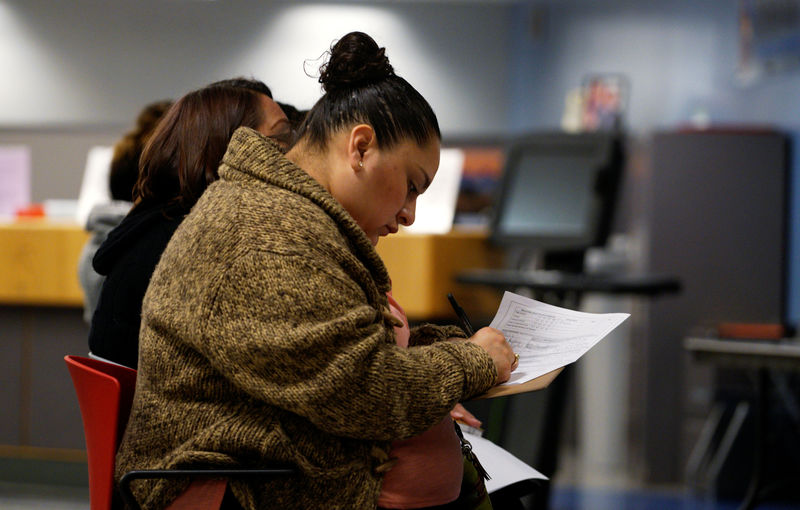 © Reuters. A job seeker fills out an application at a job fair at the Denver Workforce Center in Denver
© Reuters. A job seeker fills out an application at a job fair at the Denver Workforce Center in DenverBy Dan Burns
NEW YORK (Reuters) – Headline U.S. job growth hit the brakes in February, registering the smallest gain since September 2017 and the third-smallest during the unprecedented run of 101 consecutive months of payrolls gains.
Here are five factors that stood out in the Labor Department’s report.
A ONE-OFF OR START OF A WEAKENING TREND?
The big question on the minds of economists and investors is whether February was an anomaly or the start of cyclical weakening in the U.S. job market.
Since the uninterrupted employment expansion began in October 2010, the only two weaker months than February’s 20,000 increase were in May 2016 at 15,000 and September 2017 at 18,000. In both cases, job growth snapped back the next month, rising by more than 250,000 in both cases.
Graphic: U.S. job gains stall – will they bounce back – https://tmsnrt.rs/2Un9XbP
PRIME-AGE WORKFORCE IS GROWING … AND CHANGING
The workforce participation rate among prime working-age adults between 25 and 54 years old is around the highest since 2010 at 82.5 percent, much higher than the overall participation rate of 63.2 percent.
Moreover, its slow recovery has been led by prime-age women more so than men, reflecting a long-running change in the makeup of the American workforce. The female participation rate is 75.9 percent, up 2.6 percentage points from its low in 2015, but the male rate has risen by just 1.5 points from its trough in 2014.
That recently drove the workforce gender gap to a record low, and February’s reading is only just off that.
Graphic: U.S. workforce participation – https://tmsnrt.rs/2CaJ03X
WAGE GAINS ARE ACCELERATING
The yearly increase in average hourly earnings was the biggest since 2009 at 3.4 percent, but that reflects a wide range of pay rise rates across different business sectors.
Manufacturing pay growth was the weakest at just 2.63 percent, while wages in the tech sector grew near the fastest in decades at around 6 percent.
Graphic: U.S. wage growth – https://tmsnrt.rs/2NPj8iR
LEAVING THE EMPLOYMENT SIDELINES
As the headline unemployment rate dropped to 3.8 percent, near a five-decade low, a wider measure of people who are marginally attached to the workforce – the so-called U6 rate – fell by the most since the Bureau of Labor Statistics began tracking it in 1994.
February’s reading of 7.3 percent was the lowest since 2001.
Some economists believe that the recent pickup in wage growth has motivated these individuals to check back into the labor force after a prolonged absence.
Graphic: Back in the workforce – https://tmsnrt.rs/2UnbMFH
Graphic: The draw of better pay? https://tmsnrt.rs/2NRzvvd
NORTHERN EXPOSURE?
February’s big miss on U.S. payroll growth – job gains had been estimated at 180,000 – was not replicated by America’s neighbor to the north.
Canada created nearly 56,000 jobs last month when no gains had been forecast.
Moreover, it was the first time since 2012 that Canadian payrolls growth topped U.S. gains. The margin of 25,900 was the largest since 2010.
Graphic: Whoah Canada! – https://tmsnrt.rs/2CbRNml
Source: Investing.com





























